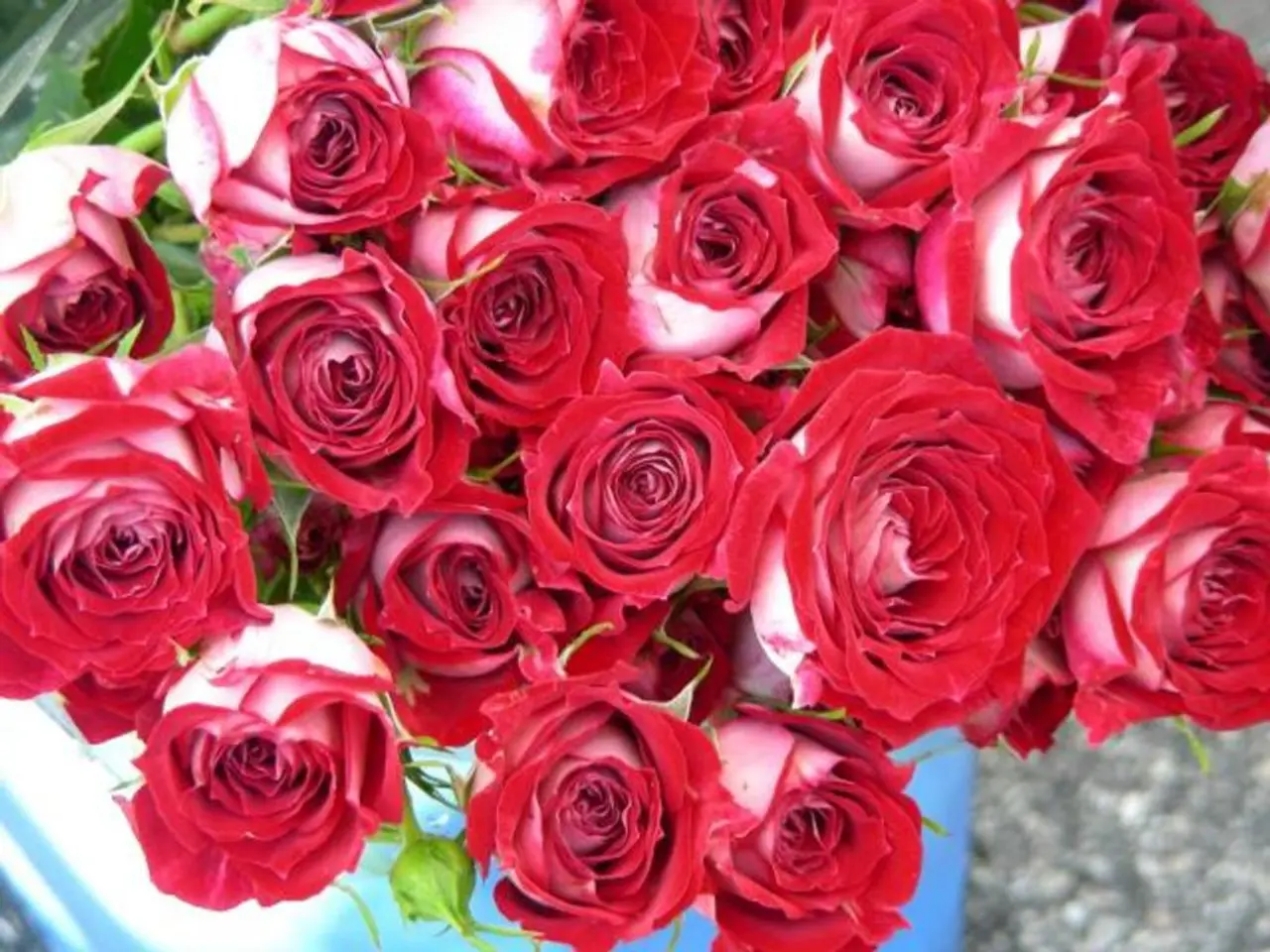Yellowing Rose Leaves: Causes Identified & Solutions Provided
Roses, a beloved addition to many home landscapes, can sometimes display yellow leaves. This article aims to shed light on the common causes of this issue and provide solutions for treating and preventing it.
When planting roses, it's essential to situate them in a location that receives ample sun and use preventative sprays like an all-in-one rose spray to help reduce fungal infections. However, yellowing leaves on roses can be a result of a combination of factors, including cultural needs such as light, nutrient levels, and moisture content in the soil.
Overwatering or prolonged periods of underwatering can cause the leaves of rose plants to begin yellowing. To maintain the optimal watering regime, water your roses early in the morning and occasionally rinse the entire bush gently to remove contaminants or visiting insects. Proper spacing between each plant also helps increase airflow and reduce the likelihood of disease.
Yellow leaves can appear due to a lack of Nitrogen, magnesium, and iron. Routine feeding can help meet each plant's needs, using balanced, water-soluble fertilizer. A Soil Test Kit can be used to determine if the soil has any deficiencies.
Unexpected yellowing may also be caused by troubles with insects like aphids, spider mites, and thrips. Nutrient deficiencies in the soil, such as insufficient levels of iron, magnesium, and nitrogen, can contribute to a plant's change in color and may even lead to a sudden loss of vigor.
Yellow spots on rose leaves can indicate various diseases such as black spot, rose mosaic disease, rust, and other fungal issues. Roses can become stressed with too much heat, and mulching around them may help. Yellow leaves caused by changes in the plant's care will usually clear up quickly with proper water levels maintenance.
Common causes of yellow leaves on roses include incorrect watering (both overwatering causing root rot and underwatering causing stress), nutrient deficiencies (especially nitrogen deficiency), fungal diseases like downy mildew and rust, poor air circulation, and sometimes environmental factors such as insufficient sunlight or heat stress.
To address these issues, common treatments include water management, fertilization, disease control, soil amendments, and adjusting sunlight and environment. Water deeply but infrequently to keep soil moist but not waterlogged; use nitrogen-rich, slow-release fertilizer to address nutrient deficiency; remove and destroy infected leaves; improve air circulation by spacing plants; use horticultural oils or organic fungicides (e.g., copper-based) early in fungal infections; adjust soil pH to 6.0–6.5 with sulfur or organic mulch and add chelated iron if iron chlorosis is detected.
Removing yellow or diseased leaves while leaving healthy foliage supports plant recovery. For severe infections, pruning back and monitoring new growth may be necessary. Yellow leaves caused by disease may require more attention, including removing infected leaves and stems from the shrub and consulting with an extension service agent or local garden center.
Newly planted bushes may show signs of stress as they acclimate to new growing conditions. With proper care and attention, these issues can be addressed, and your roses can regain their vibrant, healthy appearance.
Incorporating roses into your home-and-garden can enhance your lifestyle, but it's crucial to address the common causes of yellow leaves, such as nutrient deficiencies, incorrect watering, fungal diseases, poor air circulation, and environmental factors. To maintain the health of your roses, consider using preventative sprays, maintain proper watering regimes, conduct routine feeding using balanced fertilizers, remove and destroy infected leaves, and improve air circulation around your plants.




